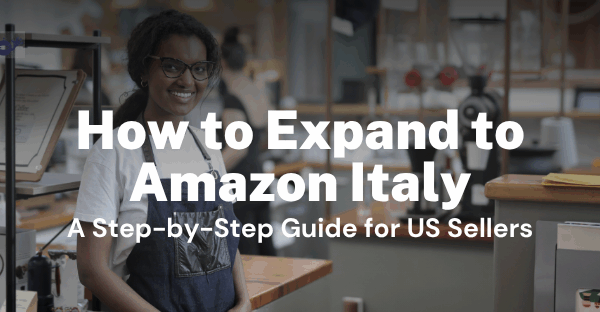Amazon SEO : A Comprehensive Beginner’s Guide to Higher Product Rankings
In today’s complicated, multichannel eCommerce world, using Amazon is not only a luxury but also a need for merchants looking to develop a successful brand.
Amazon merchants understand that improving their Amazon listings has a direct impact on their product rankings – and sales.
What most sellers don’t know is how to create a winning Amazon SEO plan and beat the Amazon A9 algorithm. There are numerous misconceptions regarding Amazon SEO and how it works.
Given this, AiHello has created a comprehensive guide that not only explains how Amazon’s product ranking algorithm works but also emphasises the essential methods and tools for outranking your competition.
So, let’s get started.
Understand How Amazon Search Works
Amazon, like Google and other related search engines, uses an algorithm to rank products for specific keyword queries, taking into account a variety of parameters. Amazon sellers, like other search engines, can improve their product listings to achieve upward mobility for their ranks.
Many merchants, however, are unaware of the plethora of useful approaches for establishing an efficient Amazon SEO plan that beats the company’s A9 algorithm.
A9 is the name of the underlying search engine. The algorithm uses several metrics to determine the relevance of millions of products in its database to the search queries supplied by users.
Before we get into the numerous strategies for optimising your Amazon product listings, you should first understand how Amazon search works.
The Amazon search results page, the various categories on the search results page, sponsored products, and search filters are all examples of this.
1. Amazon’s Search Result Page
When a customer, buyer, or shopper (whatever you want to call it) searches for something on Amazon, the goods are shown on the result page in one of two ways:
List View: On each result page, this layout style displays roughly 15 – 16 goods.
Gallery View: This layout style displays around 24 – 25 goods on each result page.
This expertise is required to accurately categorise the product using these views and filters.
2. Amazon’s Sponsored Products
Sponsored Products is another crucial area in Amazon’s search results. They can be found on many sites and in various locations. Sponsored product results are often shown at the top of a product page or maybe merged with organic results.
Along with the proper keyword bidding techniques, you will also need to optimise the sponsored product listings for Amazon SEO. Your product will be listed on the top page of sponsored items if you use the correct Amazon SEO methods and PPC campaigns.
3. Amazon’s Search Filters
Then, on the left, there will be filter fields. There are several filters available, such as product category, seller rating, shipment method, brand, colour, product condition, and so on. Amazon’s algorithms are extremely intelligent.
They are developed in such a manner that they can tell if a product is black or brown if it is indicated in the product listing language. Only when this information is contained in the listing copy is the product qualified to be displayed in the subset of the filter query. It’s no surprise that an “optimised listing” is important.
Learn About Amazon Search Engine Ranking
The Amazon Sales Rank is a system of inverted ranking. This indicates that the product with the lowest sales ranks last, while the one with the highest sales ranks first.
While many Amazon customers and experts are still attempting to figure out what factors influence sales rankings, there are three key points that every Amazon seller should keep in mind:
- Amazon, like Google, has a search engine. This implies that there is also SEO.
- Potential purchasers will almost probably search for your goods before discovering them among other comparable ones. This is where increasing the exposure of your goods becomes critical. This is where Amazon SEO comes into play. With the correct Amazon SEO methods, you may not only boost your ranks but also increase your sales.
- Your rivals are looking for a clear Amazon SEO guide at the same time you are. As a result, you must begin adopting SEO methods as soon as possible.
Potential purchasers will never view products that do not appear on the first page of search results. Furthermore, some customers never look past the first three listings. Every Amazon seller understands the importance of the Amazon search engine and how ranking higher on the results page is critical for a successful business.
This is where the Amazon A9 Algorithm factors in.
What Is Amazon’s A9 Algorithm
A9, Amazon’s algorithm, is designed to display you the product that you are most likely to buy. Furthermore, it displays the product that is most likely to result in a favourable shopping experience. In other words, distinguishing between trusted and untrustworthy sources.
How Does It Work?
While Amazon’s a9 algorithm serves the same goal as those used by other internet search engines (and there are many similarities), certain important features distinguish A9 as a distinct beast in terms of optimization tactics and prospects.
People do many types of searches on search engines such as Google, each motivated by a distinct set of intents. Many Google searches are informative, with the user looking for information or data about something. This sort of search accounts for the vast majority of Google inquiries.
Other Google searches may be navigational, implying that the user is attempting to reach a certain website or area on the internet.
The algorithm decides which items to offer to potential consumers and how high those products can rank depending on several factors such as:
- Keyword or search query relevance
- Customers’ previous preferences and behaviour
- The number of previous purchases of a specific product
Factors That Influence The A9’s Search Rankings
When it comes to Amazon A9 factors, they are divided into two categories:
Explicit:
- Price – A higher price differential than your competitors might work against you.
- Stock Supply – Any product of yours that is “out of stock” might also be a disadvantage. Your listing may be relegated to the bottom of the page or deleted entirely.
- Text Relevance – This indicates how well you have optimised your product listing with the appropriate title and description.
Inexplicit:
- Sales Velocity – When you start selling more products, the higher are the chances of rankings and becoming successful on Amazon.
Now, let’s look at Amazon product optimization in detail.
What Should You Know About Amazon SEO?
To improve a product listing on Amazon, a seller must understand the A9 algorithm’s major ranking variables. Since you now have a decent knowledge of product classification and URL definition, we will now look at how the “optimization” component is carried out.
Aside from learning about Amazon’s ON-Page SEO, you will also learn about the many elements that Amazon considers when presenting a product in the top results.
Keep in mind that Amazon aims to give its consumers a positive and satisfying shopping experience. Only a satisfied customer will return to Amazon to purchase more and more things.
Amazon SEO: How To Improve Product Rankings On Amazon
Here are a few pointers and strategies for dealing with Amazon’s A9 ranking variables and consistently improving your results:
1: Amazon Product Title
The product title is the first thing consumers notice in a listing—does it fit their expectations? Is it conveying the appropriate quantity of information? Major companies are normally allowed to utilise the product’s model name, although lesser-known brands may be required to list a few characteristics.
In a search for “laptop stand,” for example, the generic Amazon version utilised the following title:
AmazonBasics Adjustable Ventilated Laptop Stand
While the fourth-placed third-party laptop stand used this title:
Adjustable Laptop Stand – JUBOR Portable Foldable Ergonomic Desktop Stand Holder Mount for MacBook Notebook Computer PC iPad Tablet
While the first is unquestionably more appealing, the second title has much more terms that someone may enter into the search field, such as “Notebook Computer” or “Laptop Stand.”
Because Amazon’s title limit is 500 characters, marketers may provide more information about their goods. However, be cautious: the more words in the title, the less trustworthy the product may appear.
2: Amazon Keyword Research For Product Keywords
Amazon provides a special section for entering extra keywords. Unlike conventional SEO, these keywords must not appear in the title or description, or Amazon will overlook them.
Consider utilising this as a chance to insert relevant keywords, maybe from other vertical sectors. If your product is a coffee brand, you could want to incorporate “tea” or “energy drinks” to attract more customers.
Conduct keyword research in the same way as you would for improving your website’s content. Take the effort to discover the selling terms and undertake A/B testing to obtain a better understanding of how to optimise your content for A9.
3: Amazon Product Price
It might be tempting for a startup to undercut the competition to increase sales in the initial few months. While playing the price game might help you convert consumers, going too far can prompt A9 to flag you as suspicious.
Your price should be smart and competitive, but it should also be in line with your target market. Consider who your ideal consumer is before you begin pricing your stuff. Why are they interested in your products? What is their annual salary? Who are they in their everyday lives? You should investigate the competition and utilise that information to establish your price, but it isn’t the only factor to consider.
4: Amazon Product Images
The picture is the first thing a buyer looks for after viewing the headline. “Does this match the product that I’m looking for?” they may wonder.
Some marketers enjoy using flashy visuals in their images. We’ve seen colour palettes (to demonstrate the numerous colour schemes of a product), warranty seals, and highlighted features in the past. Additional visuals aren’t required as long as there are high-quality, well-lit photographs of the goods.
When done correctly, good images may lend credibility to your product. Excellent product photos are required for dominating SEO performance on Amazon. Numerous studies have shown that high-quality pictures regularly deliver greater conversion rates.
The fundamental reason behind this should be obvious: When photos are of good quality, buyers get a greater “feel” for the product, improving the likelihood of a sale.
5: Amazon Product Description
Descriptions don’t contribute as much to Amazon SEO as other elements, but they are still an important role in encouraging buyers to buy a product. In fact, because descriptions are way below the fold and are not needed by Amazon, marketers can ignore this part entirely at their peril.
Though the product description is not as important a ranking element as the product title or bullet points, it is still relevant to the purchasing decision.
Again, the correct keywords should be used here, as well as a strong emphasis on emotive and positive sales reasons.
6: Amazon Product Features In Bullet Points
There is a lot you can play out here because Amazon provides a lot of areas to write for your goods.
Buyers or customers will never enjoy it if the “product description” has large amounts of information in paragraphs rather than tidy, unambiguous bullet points explaining every element of the product.
When creating a product description, presenting it in paragraphs might have two disadvantages, which are as follows:
- Potential searchers or purchasers despise them since they are ambiguous, unapproachable, and perplexing – which means that using them will only reduce your conversion rates or sales, as well as your visibility and velocity in Amazon search results.
- Amazon’s A9 algorithm despises walls or large quantities of text in one go. Instead, favours bullet points for a better, simpler, and more ordered look to understand and categorise.
So, the bottom line is to use bullet points to accurately define your offering.
7: Product Stock Availability
Similar to price, it should be obvious that product availability will have a significant influence on Amazon search rankings, especially if your company runs out of items. When retailers run out of stock, there is a good probability that their product listing may dwindle or disappear entirely.
As a result, retailers must ensure that their inventory levels are correctly maintained. Furthermore, make adjustments to your ordering patterns depending on seasonal trends, holidays, and other eCommerce variables.
8: Product’s Backend Search Keywords
These search phrases are now hidden from shoppers, however, they are often indexed by Amazon’s A9 algorithm. As a result, they can have a hugely favourable influence on a product’s search. The following are critical components to include in your backend:
- Keywords or search queries that you were unable to incorporate into your description or title.
- Misspellings of a product (which buyers still look for often on Amazon) or relevant keywords for your goods
- Because the United States has a larger Spanish-speaking population, you should translate your product’s terms into Spanish or French.
- Other synonyms that customers may check for.
You don’t need to repeat your keywords too many times in your listing because a larger frequency of a term does not influence ranking. It has solely a negative influence.
9: Product Reviews And Ratings
When it comes to Amazon SEO, a product’s ratings and reviews are yet another important factors that are assessed and taken into account for higher ranks. At the same time, they ensure that there is an indirect improvement in the ranks.
This, in turn, affects click-through rates and conversion rates. The larger the number of positive ratings, the higher the product’s worth. This is reflected in the evaluations of other users and buyers, who may find the customer reviews useful or unhelpful.
Those yellow stars, like reviews, play an important role in increasing click-through rates. This results in some larger click incentives with an appropriate figure and some fantastic overall average ratings.
Conclusion: Amazon SEO and Its Algorithm A9
Correctly optimising your product listing will increase your product’s appeal and discoverability by close to 80%. However, the process does not finish there. Maintaining top rankings requires keeping up with trends, algorithm modifications, and constant tweaking.
With this post, you now have a solid understanding of how the Amazon A9 algorithm works and how to improve your listing to obtain visibility on the marketplace. Even after reading this informative piece, if you are still having difficulty, don’t worry, since we have the proper tools to keep your listings on track and, as a result, increase your sales to levels you never thought.


